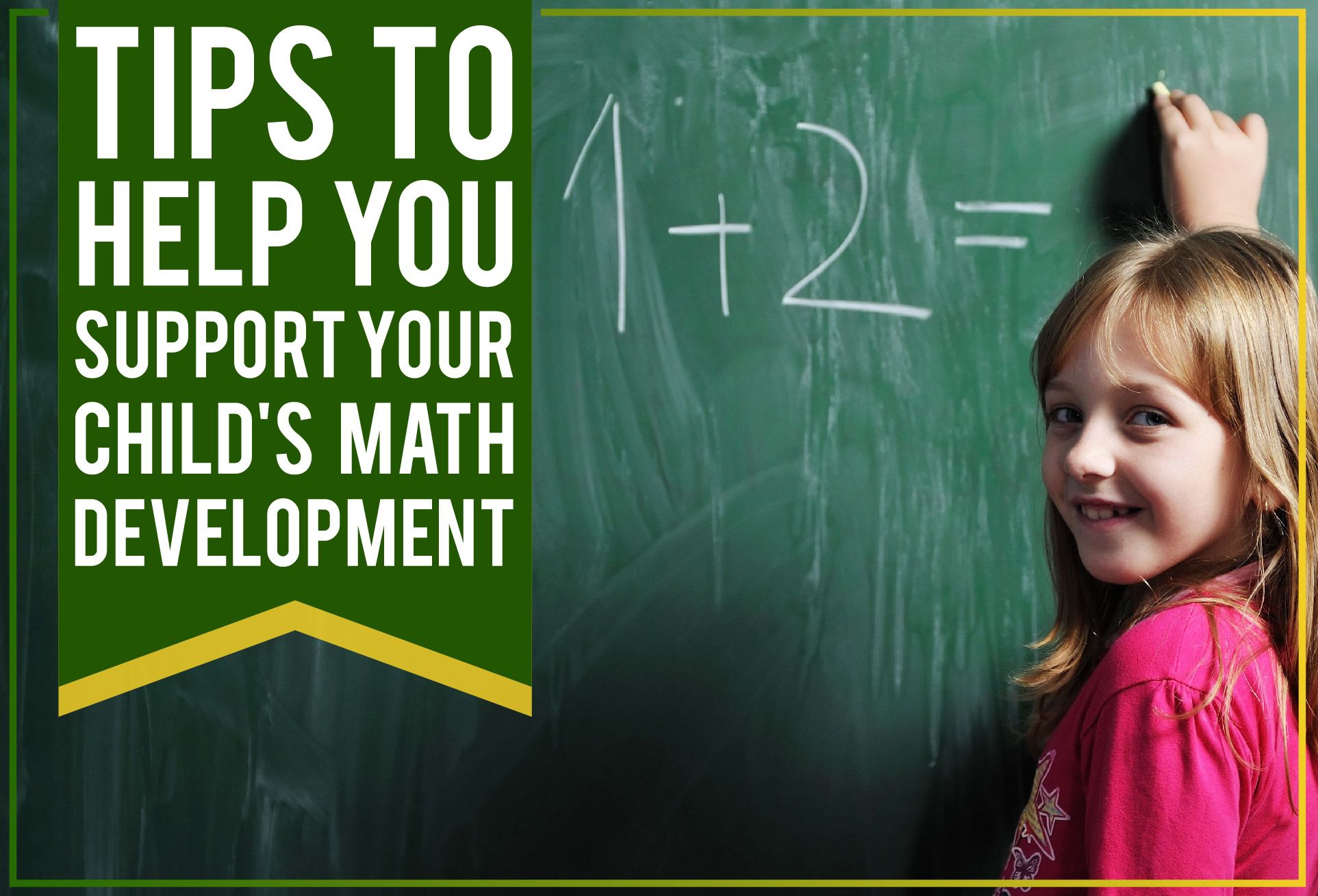Tips to Help you Support Your Child's Math Development
All school-aged children are expected to master basic skills when it comes to addition and subtraction. In addition to lessons taught in school, there are also plenty of ways we can help enhance our children’s basic math skills through daily interactions. This post will discuss the different ways parents can support math development through various informal activities outside the classroom.
The fundamentals of math that children learn during their early academic years will stay with them through all of their years of school, and beyond. You can introduce your little one to a variety of math skills by integrating number concepts into your child's daily routines. But before we outline these activities, let’s first discuss the ways in which children tend to learn math.
How children learn mathematics
During the early years, the majority of children's experience learning about math should involve play. Through this method, children are more likely to naturally connect math concepts with their daily lives. It’s also helpful for parents to incorporate their children's interests when teaching mathematics through play.
Essential math skills for children
Number sense. This refers to a child's ability to count (which begins with counting forward.) Then in school, they'll learn to also count backwards. Additionally, children will learn a more advanced skill, which is the ability to understand relationships between numbers. Addition and subtraction are examples of these higher-level concepts.
Representation. This is the ability to gain a better understanding of mathematical concepts by making them more concrete. During this process, children learn to use words, objects, and pictures to represent numbers.
Spatial sense. As children get older, this concept will be part of the area of math called “geometry”. During their early years, this skill set encompasses children’s comprehension of concepts such as size, shape, position, movement, and direction.
Measurement. Throughout their education, children learn to measure all sorts of quantities, including height, weight, length, width, and time.
Estimation. This refers to one’s ability to guess the size or amount of an item. This can be challenging for younger children but parents can help this process by teaching their little ones concepts and terms such as “bigger”, “smaller”, “more”, “less”, “greater than”, and “less than”.
Patterns. These are the repetition of images, shapes, and numbers. Patterns enable children to predict what will come next by using logic and reasoning skills.
Problem-solving. This refers to one’s ability to think about a problem and determine how to find the answer. Children are able to utilize their logical thinking skills and draw from experience to help them solve the problem.
Activities to support children's math development
Count and categorize
For this activity, collect your child's toys in a basket. Then count the items with your child. Sort and group them based on color, size, and function. For example, stuffed toys can be one group, and another set might be toys with wheels.
Call and locate
Start by teaching your toddler about phone numbers and addresses. Explain that your phone number and street address numbers need to be in the correct sequence. Then discuss how a number is assigned to every household.
Compare and contrast size
Invite your little one to look at the sizes of the objects around you. Point to the big ones, then point to the small ones. You can also ask children how the size of their body compares to the size and space of an object. For example, ask children if they think they would fit inside a box or under the table.
Get cookin'
When you and your child cook together, it can present plenty of opportunities to teach math. Cooking helps children practice skills like counting, measuring, estimating, adding, and more!
Go outside
Another activity that provides limitless math-learning opportunities is taking walks with your little one outside. When your child can walk around and explore, it enables them to practice determining the sizes of various objects they see, detecting similarities and differences, and grouping things. They can also use this time to estimate and practice counting.
Use a timer
You can record the amount of time it takes for your child to perform various activities by using an hourglass or your phone's timer. Doing this helps children gain a better understanding and sense of time, and also helps them learn that some things take longer to complete than others.
Play with blocks
Playing with toy blocks is an excellent and straightforward way of teaching children a variety of math concepts. Stacking blocks teaches children about shapes and how they relate to each other. For example, when we place two triangles together a certain way, they can form a square. Nesting different-sized figures inside each other can teach children the relationships among objects of different sizes.
Sing some rhymes
The repetition and fun tones in many children’s songs and rhymes can be very engaging for little ones. Songs are a simple way to teach children about patterns because they contain parts with similar notes. They are also excellent for enhancing developing language skills.
Make a calendar
You can use a calendar to teach your child about dates, days, and the weather. This helps children gain a better understanding about patterns, counting, and sequences. It also enriches their logical thinking skills. For example, when it's cold, they learn that they should put on warm clothes.
Mrs. Myers' Reading Room enhances children's math development through a variety of engaging educational activities. Contact us today for more information!





